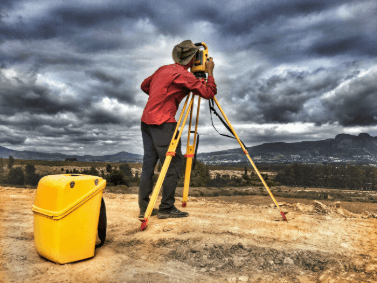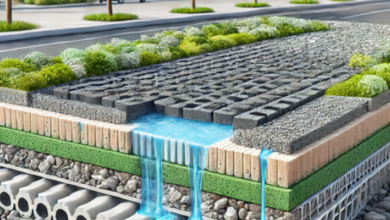How Topographical Land Surveys Improve Land Development and Planning

Successful land development and planning hinge on one fundamental element: understanding the terrain. Accurate knowledge of a site’s physical characteristics is vital for making informed decisions, reducing risks, and maximizing the potential of any project. This is where topographical land surveys come into play. These surveys provide detailed information about the land’s contours, elevations, and features, forming the backbone of effective development strategies.
In this article, we will explore how topographical land surveys improve land development and planning, detailing the critical role they play in shaping efficient, sustainable, and compliant projects.
What Is a Topographical Land Survey?
A topographical land survey is a specialized mapping process that captures the three-dimensional features of a land parcel. Unlike boundary surveys, which focus primarily on property lines, topographical surveys map natural and man-made elements across the terrain, including:
- Elevation changes and contours
- Trees, vegetation, and water bodies
- Roads, fences, buildings, and utilities
- Slopes, depressions, and other landforms
The result is a detailed, scaled representation of the land’s surface, typically delivered as contour maps, 3D models, or CAD drawings that inform design and construction.
How Topographical Surveys Enhance Land Development and Planning
1. Provides Accurate Site Data for Informed Decision-Making
The foundation of any good development plan is accurate data. Topographical surveys deliver comprehensive information on the site’s physical conditions, allowing planners and developers to:
- Assess the land’s suitability for various types of development
- Identify natural constraints like flood zones, steep slopes, or wetlands
- Understand drainage patterns and soil conditions
- Locate existing infrastructure and potential obstacles
This factual insight enables stakeholders to make sound decisions early, reducing guesswork and minimizing costly mistakes.
2. Facilitates Efficient and Effective Design
Designing structures and layouts that harmonize with the land’s natural topography leads to better outcomes. Topographical surveys enable architects and engineers to:
- Develop site plans that work with, not against, natural contours
- Position buildings to optimize views, sunlight, and wind patterns
- Design roads, drainage, and utilities that follow the terrain
- Minimize earthworks, reducing construction costs and environmental impact
For example, by understanding elevation changes, designers can avoid placing buildings in flood-prone areas or reduce the need for extensive grading, resulting in a more sustainable and cost-effective plan.
3. Improves Project Cost Management
Accurate topographical data supports detailed quantity takeoffs and cost estimates. Knowing the exact volume of earth to be moved, the length of roads to be built, or the extent of retaining walls needed helps contractors prepare realistic budgets and bids.
This reduces the likelihood of unexpected expenses during construction and helps keep the project on track financially. Moreover, by minimizing rework caused by inaccurate data, topo surveys contribute to efficient resource allocation and waste reduction.
4. Enhances Regulatory Compliance and Approval Processes
Most local authorities require topographical surveys as part of planning and building permit applications. These surveys demonstrate how a proposed development fits within existing site conditions and comply with zoning, environmental, and safety regulations.
By providing detailed, certified data on elevations, drainage, and land use, topographical surveys:
- Help secure planning permissions more smoothly
- Facilitate environmental impact assessments
- Ensure adherence to building codes and land use restrictions
- Support community consultations with clear, visual information
This regulatory alignment reduces approval delays and legal risks, keeping projects moving forward.
5. Supports Sustainable and Environmentally Sensitive Development
With increasing focus on sustainability, developers must carefully consider environmental impacts. Topographical surveys map critical natural features such as wetlands, mature trees, and waterways, enabling:
- Preservation of ecologically sensitive areas
- Effective stormwater management to prevent flooding and erosion
- Design of landscaping that supports biodiversity and soil health
- Implementation of green infrastructure and low-impact development techniques
By integrating these considerations from the outset, projects contribute positively to their surroundings and meet rising environmental standards.
6. Enables Risk Mitigation and Conflict Avoidance
Topographical surveys reveal potential challenges that might otherwise go unnoticed, such as unstable slopes, hidden drainage paths, or underground utilities. Early detection allows teams to plan mitigation strategies, such as:
- Reinforcing foundations on sloped ground
- Designing drainage systems that handle runoff effectively
- Avoiding utility conflicts or planning relocations
This proactive approach reduces risks, prevents costly project delays, and protects worker safety.
7. Improves Communication and Collaboration Among Stakeholders
Development projects involve multiple parties: landowners, developers, architects, engineers, contractors, regulators, and the community. Topographical surveys provide a clear, common reference point that:
- Helps stakeholders visualize the site conditions
- Facilitates collaboration through accurate, standardized data
- Enables virtual walkthroughs and simulations to evaluate design options
- Supports transparent decision-making and conflict resolution
This alignment fosters smoother project delivery and stronger stakeholder relationships.
Modern Technology in Topographical Surveys
Advances in technology have enhanced the accuracy and efficiency of topographical surveys. Surveyors now use:
- 3D laser scanning (LiDAR): Captures millions of points rapidly to create detailed digital terrain models.
- Drones (UAVs): Provide aerial imagery and measure inaccessible or large areas efficiently.
- GPS and Total Stations: Deliver highly accurate spatial data for precise mapping.
- BIM and CAD Software: Integrate survey data into design and construction workflows.
These tools accelerate the survey process and provide richer datasets to support complex development projects.
Conclusion
Topographical land surveys are indispensable in modern land development and planning. By providing detailed, accurate data about the physical characteristics of a site, they empower developers and planners to design smarter, build efficiently, comply with regulations, and protect the environment.
From early feasibility studies through construction, topo surveys improve decision-making, reduce risks, and facilitate collaboration—key ingredients for successful projects. Whether you’re developing a residential community, commercial complex, or infrastructure project, investing in a professional topographical survey is one of the smartest steps you can take.




